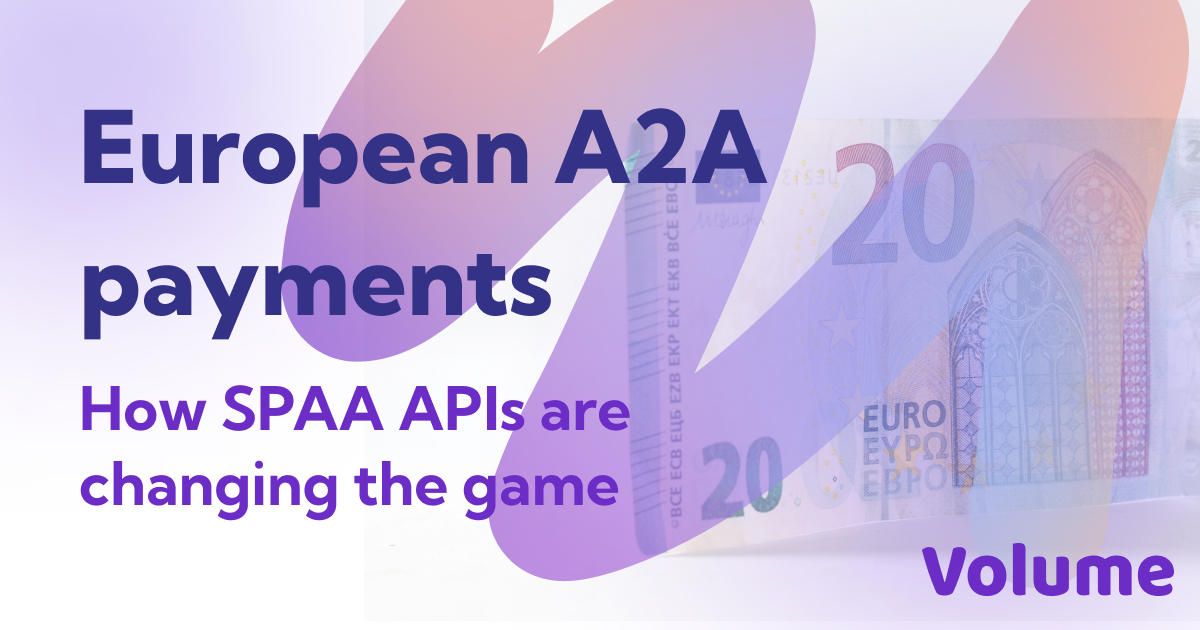Start Your 30-Day Free Trial Today
Get free trial
Some exciting news dropped about the prices for commercial open banking APIs under the SEPA Payment Account Access scheme (SPAA). This is a big deal because it takes us a step closer to having a more balanced open banking system that benefits both banks and fintech companies. In other words…It's like unlocking great features for digital payments in Europe. Let's break it down and see what SPAA is, how it connects with PSD3, and what's coming up.
SPAA stands for the SEPA Payment Account Access scheme. It's this new initiative that aims to create open banking services that go beyond what PSD2 (a set of rules for online payments) requires. Any bank or fintech in the EU can sign up for it and offer better payment and data services to make things better for both companies and customers.
The European Payments Council (EPC), in 2021,came up with this idea to make the EU a big player in the digital world. They want to upgrade old systems using Application Programming Interfaces (APIs) to make everything digital, starting with payments enabling A2A transactions. It's like giving a digital makeover to how we pay and make transactions, and they hope it can be a model for other areas too.
Unlike the rules in PSD2, which mainly focus on how payments start, SPAA goes beyond that. It brings in new features that can make paying from one account to another even better. While PSD2 is like a required set of rules that banks have to follow for free, SPAA is something banks and fintechs can choose to join. And at the same time banks will be able to offer premium open banking APIs and be able to actually make money from it.
PSD3 is the upgraded version of PSD2, and it's going to replace it. It fits right in with SPAA, giving fintechs free basic functions through PSD3 but letting them join SPAA for extra features and functionalities. We can see it as having two options - an easy one for new companies to join and another for banks and big fintechs to bring out even better payment services with SPAA. Everyone gets what they like.
SPAA is based on an API rulebook and a commercial model. The rulebook has all the premium functionalities that banks and fintechs can use, like Dynamic Recurring Payments (DRP). With DRP, you can set up payments that repeat but with all sorts of choices, like different start dates, how often they happen, when they stop, and more. Basically it enables users to make subscription payments or buy online with just a click.
The model plan includes fees - like charges for every time they use these features. It's how they make a little money for offering these extra features.
SPAA is a big deal because it works together with PSD2/PSD3 to create a solid open banking system in Europe. By letting banks make money from these extra features, it's a chance for them to improve and create the next level of digital payment services. And it's not just banks; fintech companies get to be part of the innovation too.
In early December (2023), they shared the scheme adherence pack (all the documents needed) for banks and Payment Service Providers (PSPs) to apply and get in on the action. With the handbook and commercial model ready, EPC can continue getting things set up for 2024. They are going to make a scheme directory, figure out how to charge for these new features, and start a trial run.
SPAA is the starting line start of something new in Europe - a mix of teamwork between banks and fintechs. Plus, with everyone using instant credit transfers, it looks like paying straight from one account to another is becoming the main way to go instead of using traditional cards.
Discover how Volume can help you get into the Open Banking world
Book a call with Volume’s team
Volume Payments Limited is a private limited company with company number 12431529
Volume Payments Limited, is a distributor of Modulr FS Limited, a company registered in England and Wales with company number 09897919, which is authorised and regulated by the Financial Conduct Authority as an Electronic Money Institution (Firm Reference Number: 900573) for the issuance of electronic money and payment services. Your account and related payment services are provided by Modulr FS Limited. Whilst Electronic Money products are not covered by the Financial Services Compensation Scheme (FSCS) your funds will be held in one or more segregated accounts and safeguarded in line with the Electronic Money Regulations 2011. for more information please see the Modulr safeguarding letter